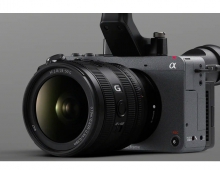
Sony Advances Magnetic Tape Technology To Fit 185TB On LTO Media
Sony has managed to shrink the magnetic particles of a magnetic layer and achieved the world's highest areal recording density for tape storage media of 148 Gb/in2 (gigabits per square inch).
This areal recording density is equivalent to approximately 74 times the capacity of current mainstream coated magnetic tape storage media (LTO-6 high-end LTO Ultrium format data cartridge utilizing a linear recording system), and makes it possible to record more than 185 TB (terabytes) of data per data cartridge.
Magnetic tapes with a coating of magnetic powder measuring tens of nanometers applied to the top of the film are currently considered the mainstream form of tape storage media. LTO-6 high-end LTO Ultrium format data cartridges that are based on this technology utilize a linear recording system (uncompressed) and have an areal recording density of approximately 2 Gb/in2, with a total recording capacity of 2.5 TB (uncompressed). Until now, recording density of this type of media was increased by enhancing the miniaturization technologies that enable the size of magnetic particles on which data is stored to be decreased.

Sony has developed a new vacuum thin film forming technology which is able to form extremely fine crystal particles with the aim of creating a next generation tape storage media. This newly developed magnetic tape technology uses sputter deposition, a type of vacuum thin film forming technology, to generate multiple layers of crystals with a uniform orientation on a polymer film with thickness of less than 5 micrometers. Until now, when the sputter method was used to deposit a thin film of fine magnetic particles on a polymer film, roughness on the surface of the soft magnetic underlayer caused the orientation of the crystals in the underlayer above it to become non-uniform. This in turn caused non-uniform crystalline orientation and variations in the size of the magnetic particles (grain) in the nano-grained magnetic layer directly above the underlayer, and prevented increases in recording densities. By optimizing sputter conditions and independently developing a soft magnetic underlayer with a smooth interface, Sony has made it possible to minimize disparities in crystalline length and growth. This enabled Sony to create a nano-grained magnetic layer composed of fine magnetic particles with an average size of 7.7 nm. When the magnetic tape created using this technology was measured and evaluated using an exploratory recording and assessment device, this new media was shown to achieve the world's highest areal recording density of 148 Gb/in2, equivalent to approximately 74 times the capacity of conventional coated tape media for data storage.
Sony will jointly announce these results with IBM, who assisted with measuring and assessing the recording density of this new technology, at the INTERMAG Europe 2014 international magnetics conference to be held in Dresden, Germany beginning on May 4.
Sony did not say when this new tape storage media would be commercialized, but said it would continue to work on the development of increasingly advanced thin layer deposition technologies based on the sputter method, with the aim of increasing recording densities even further.
Magnetic tapes with a coating of magnetic powder measuring tens of nanometers applied to the top of the film are currently considered the mainstream form of tape storage media. LTO-6 high-end LTO Ultrium format data cartridges that are based on this technology utilize a linear recording system (uncompressed) and have an areal recording density of approximately 2 Gb/in2, with a total recording capacity of 2.5 TB (uncompressed). Until now, recording density of this type of media was increased by enhancing the miniaturization technologies that enable the size of magnetic particles on which data is stored to be decreased.

Sony has developed a new vacuum thin film forming technology which is able to form extremely fine crystal particles with the aim of creating a next generation tape storage media. This newly developed magnetic tape technology uses sputter deposition, a type of vacuum thin film forming technology, to generate multiple layers of crystals with a uniform orientation on a polymer film with thickness of less than 5 micrometers. Until now, when the sputter method was used to deposit a thin film of fine magnetic particles on a polymer film, roughness on the surface of the soft magnetic underlayer caused the orientation of the crystals in the underlayer above it to become non-uniform. This in turn caused non-uniform crystalline orientation and variations in the size of the magnetic particles (grain) in the nano-grained magnetic layer directly above the underlayer, and prevented increases in recording densities. By optimizing sputter conditions and independently developing a soft magnetic underlayer with a smooth interface, Sony has made it possible to minimize disparities in crystalline length and growth. This enabled Sony to create a nano-grained magnetic layer composed of fine magnetic particles with an average size of 7.7 nm. When the magnetic tape created using this technology was measured and evaluated using an exploratory recording and assessment device, this new media was shown to achieve the world's highest areal recording density of 148 Gb/in2, equivalent to approximately 74 times the capacity of conventional coated tape media for data storage.
Sony will jointly announce these results with IBM, who assisted with measuring and assessing the recording density of this new technology, at the INTERMAG Europe 2014 international magnetics conference to be held in Dresden, Germany beginning on May 4.
Sony did not say when this new tape storage media would be commercialized, but said it would continue to work on the development of increasingly advanced thin layer deposition technologies based on the sputter method, with the aim of increasing recording densities even further.





















